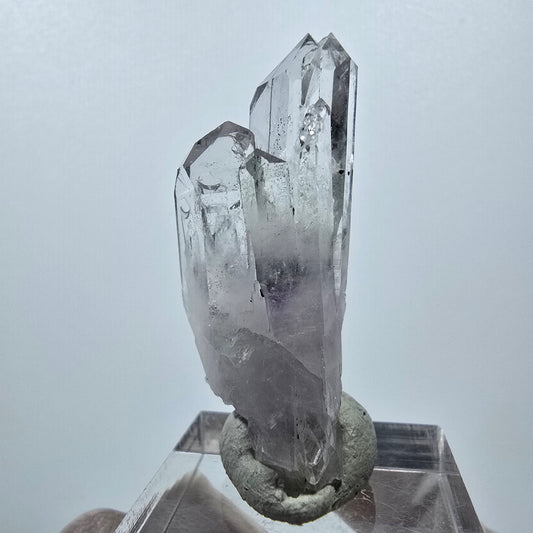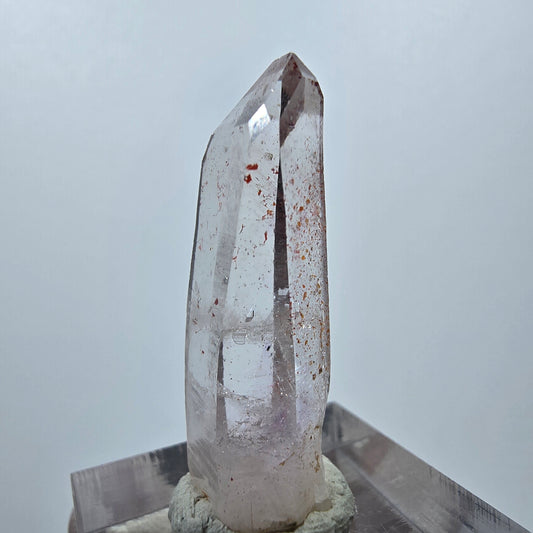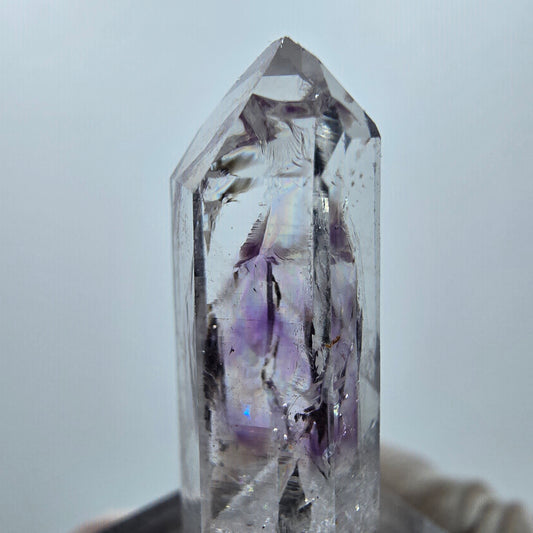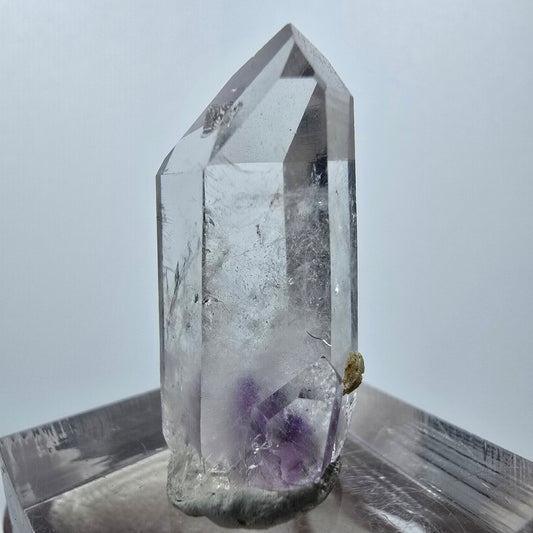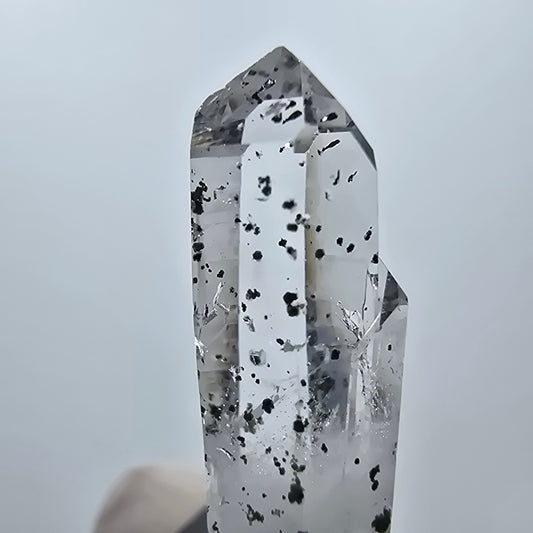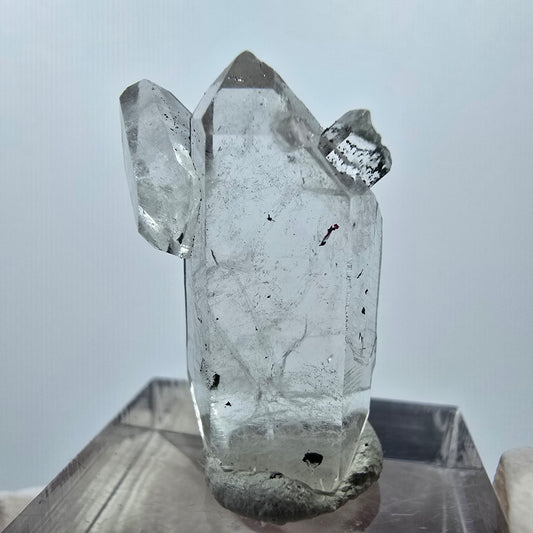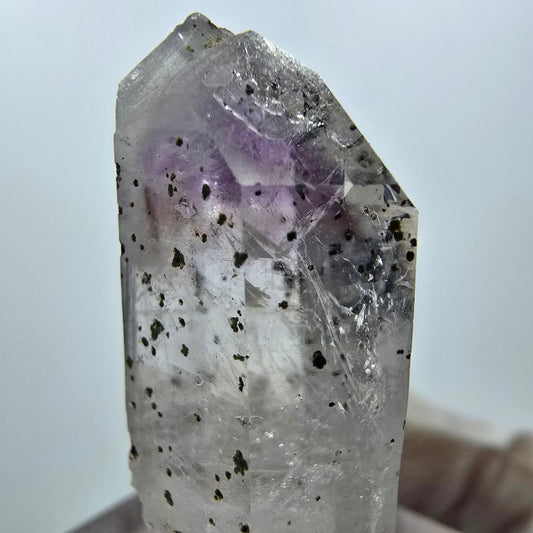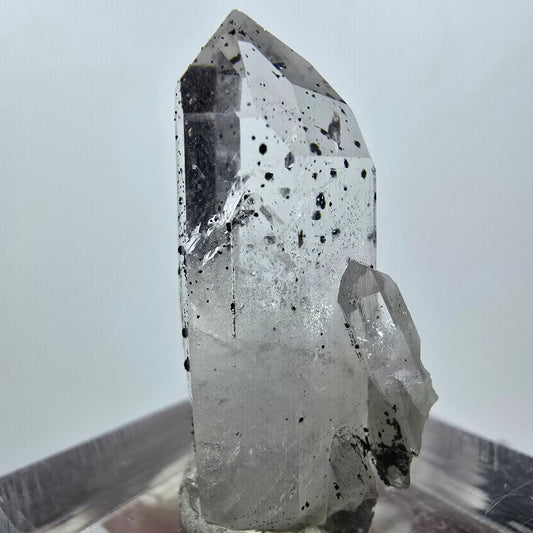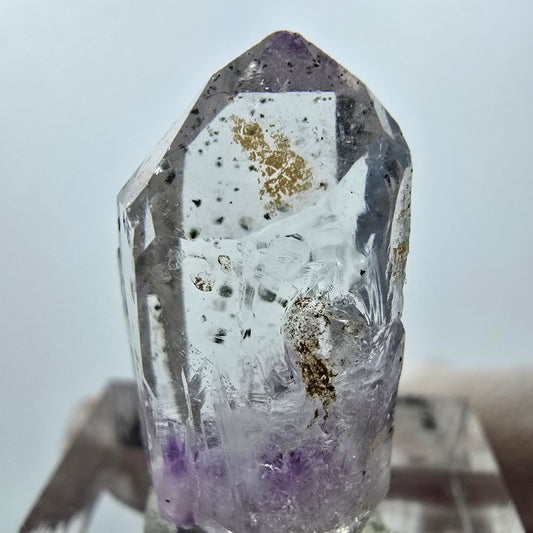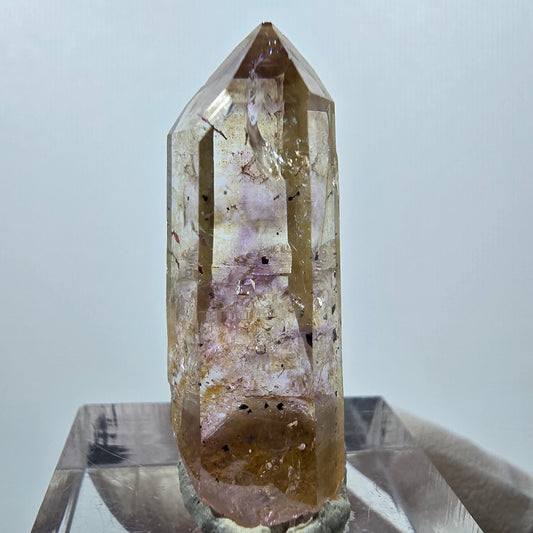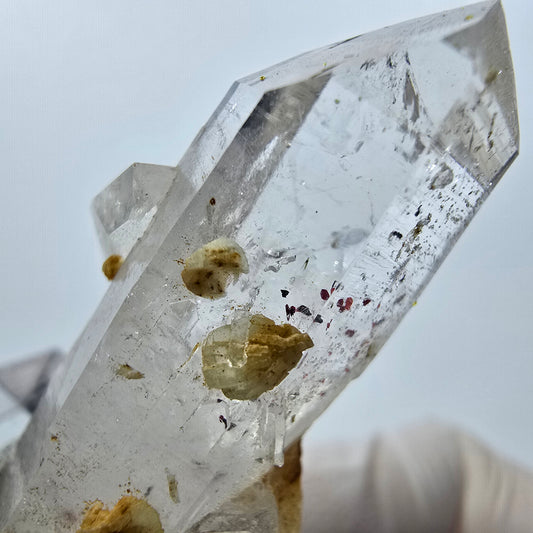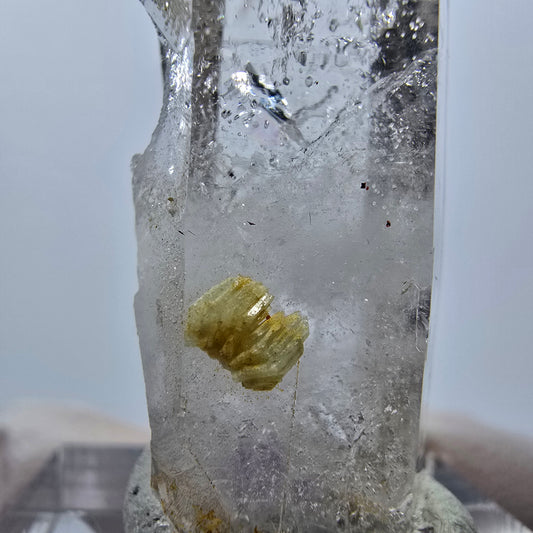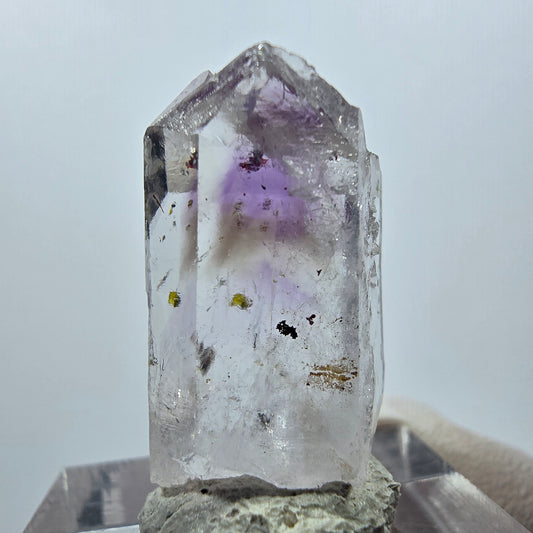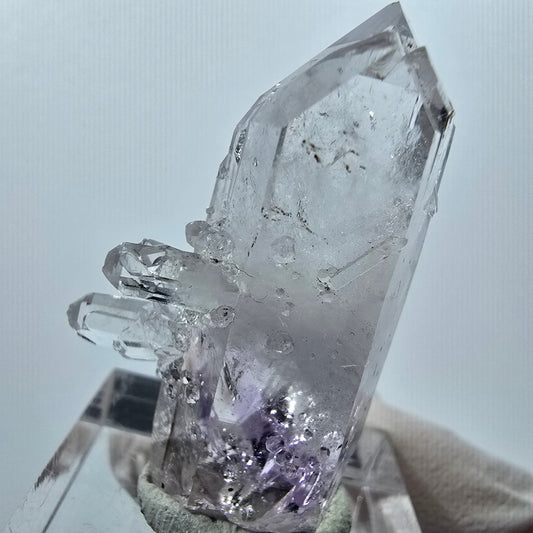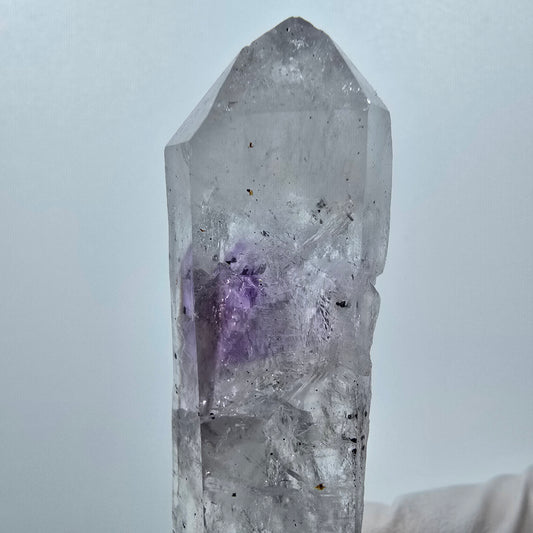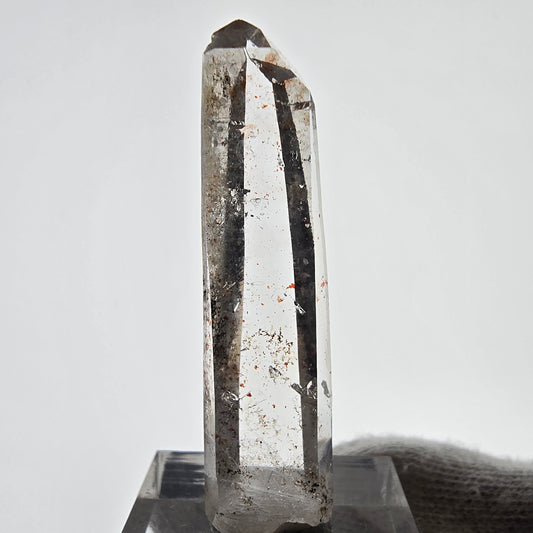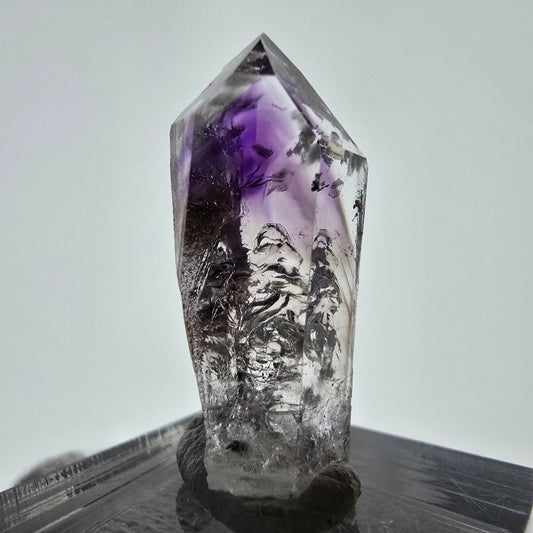-
Phantom Amethyst with Hematite Streep Mine, Goboboseb, Namibia 44*16*10mm
Regular price €20,49 EURRegular priceUnit price / per -
Phantom Amethyst with Hematite Goboboseb, Namibia 34*13*8mm
Regular price €16,19 EURRegular priceUnit price / per -
Phantom Amethyst with Hematite Streep Mine, Goboboseb, Namibia 32*10*10mm
Regular price €23,49 EURRegular priceUnit price / per -
Phantom Amethyst with Hematite Streep Mine, Goboboseb, Namibia 30*15*10mm
Regular price €19,79 EURRegular priceUnit price / per -
Clear Hematite Quartz Point Streep Mine, Goboboseb, Namibia 34*9*9mm
Regular price €21,19 EURRegular priceUnit price / per -
Clear Hematite Quartz Point Streep Mine, Goboboseb, Namibia 27*11*8mm
Regular price €17,59 EURRegular priceUnit price / per -
Clear Hematite Quartz Double Terminated Point Streep Mine, Goboboseb, Namibia 28*18*8mm
Regular price €21,19 EURRegular priceUnit price / per -
Phantom Amethyst with Hematite Streep Mine, Goboboseb, Namibia 33*14*11mm
Regular price €22,69 EURRegular priceUnit price / per -
Clear Hematite Quartz Point Streep Mine, Goboboseb, Namibia 29*14*10mm
Regular price €21,19 EURRegular priceUnit price / per -
Phantom Amethyst with Hematite Streep Mine, Goboboseb, Namibia 27*13*10mm
Regular price €25,99 EURRegular priceUnit price / per -
Enhydro Phantom Amethyst, Hematite Streep Mine, Goboboseb, Namibia 32*11*11mm
Regular price €25,19 EURRegular priceUnit price / per -
Phantom Amethyst with Hematite Streep Mine, Goboboseb, Namibia 29*11*7mm
Regular price €24,29 EURRegular priceUnit price / per -
Clear Hematite Quartz Point Streep Mine, Goboboseb, Namibia 42*12*10mm
Regular price €25,99 EURRegular priceUnit price / per -
Phantom Amethyst with Hematite Streep Mine, Goboboseb, Namibia 32*10*10mm
Regular price €26,79 EURRegular priceUnit price / per -
Clear Quartz, Prehnite, Hematite Point Streep Mine, Goboboseb, Namibia 38*22*16mm
Regular price €25,99 EURRegular priceUnit price / per -
Clear Quartz, Prehnite, Hematite Point Streep Mine, Goboboseb, Namibia 43*21*13mm
Regular price €24,29 EURRegular priceUnit price / per -
Phantom Amethyst with Prehnite, Hematite Streep Mine, Goboboseb, Namibia 26*14*10mm
Regular price €25,99 EURRegular priceUnit price / per -
Phantom Amethyst with Analcim, Hematite Streep Mine, Goboboseb, Namibia 38*23*14mm
Regular price €54,90 EURRegular priceUnit price / per -
Enhydro Harlequin Quartz, Hematite Quartz Streep Mine, Goboboseb, Namibia 36*18*13mm
Regular price €44,90 EURRegular priceUnit price / per -
Harlequin Phantom Amethyst with Hematite Streep Mine, Goboboseb, Namibia 37*26*14mm
Regular price €65,90 EURRegular priceUnit price / per -
Phantom Amethyst, Hematite Point Streep Mine, Goboboseb, Namibia 33*16*13mm
Regular price €38,90 EURRegular priceUnit price / per -
Phantom Amethyst, Hematite Point Streep Mine, Goboboseb, Namibia 39*19*16mm
Regular price €44,90 EURRegular priceUnit price / per -
Phantom Amethyst, Hematite Point Streep Mine, Goboboseb, Namibia 38*12*11mm
Regular price €25,99 EURRegular priceUnit price / per -
Phantom Amethyst, Hematite Point Streep Mine, Goboboseb, Namibia 48*21*14mm
Regular price €42,90 EURRegular priceUnit price / per -
Harlequin Quartz, Hematite Points Streep Mine, Goboboseb, Namibia 39*21*18mm
Regular price €38,90 EURRegular priceUnit price / per -
Skeleton Phantom Amethyst with Hematite Streep Mine, Goboboseb, Namibia 66*16*12mm
Regular price €44,90 EURRegular priceUnit price / per -
Harlequin Phantom Amethyst with Hematite Streep Mine, Goboboseb, Namibia 42*18*16mm
Regular price €34,90 EURRegular priceUnit price / per -
Phantom Amethyst Hematite Calcite Prehnite Specimen Streep Mine Namibia 50*45*25mm
Regular price €52,90 EURRegular priceUnit price / per -
Phantom Fluorite, Hematite Specimen Erongo, Namibia 28*26*15mm
Regular price €17,29 EURRegular priceUnit price / per -
Lemurian Phantom Smoky Quartz, Hematite Point Valentine Pocket, Namibia 47*12*8mm
Regular price €12,99 EURRegular priceUnit price / per -
Enhydro Phantom Amethyst with Hematite, UV Calcite, 3x Bubble Streep Mine, Namibia 46*22*16mm
Regular price €28,39 EURRegular priceUnit price / per -
Phantom Amethyst with Hematite Streep Mine, Goboboseb, Namibia 43*30*19mm
Regular price €30,59 EURRegular priceUnit price / per -
Phantom Amethyst with Epidote, Hematite Streep Mine, Goboboseb, Namibia 34*17*16mm
Regular price €22,69 EURRegular priceUnit price / per -
Phantom Amethyst with Analcim, Hematite Streep Mine, Goboboseb, Namibia 33*11*8mm
Regular price €44,90 EURRegular priceUnit price / per -
Enhydro Phantom Smoky Quartz with Hematite, 3x Bubble Streep Mine, Namibia 39*12*9mm
Regular price €33,09 EURRegular priceUnit price / per -
Phantom Amethyst with Hematite, Stilbite Streep Mine, Goboboseb, Namibia 28*12*10mm
Regular price €37,90 EURRegular priceUnit price / per
Collection: Hematite quartz
Hematite quartz from Namibia: Rare crystals with fascinating black inclusions
Namibia is a paradise for mineral collectors and gemstone lovers. Hematite quartz , with its striking black hematite inclusions, is among the country's most spectacular finds. These rare crystals are commonly found in the Streep Mine , the Goboboseb Mountains , the Brandberg Massif , and the Erongo region . In this blog post, you'll learn all about the origin, properties, and special features of these extraordinary quartz crystals.
What are hematite quartzes?
Hematite quartz is a special form of quartz crystal characterized by inclusions of hematite (Fe₂O₃). Hematite is an iron-containing mineral that gives the crystals a dark to metallic-black color. These inclusions can appear as fine needles, dots, or flat structures and give the quartz a unique appearance.
They come in different variants:
- Smoky quartz : With smoky-brown color and dark hematite inclusions.
- Rock crystal : Clear and transparent, often with black accents.
- Phantom quartz : With visible growth layers and hematite inclusions.
- Amethyst : With violet coloring and dark hematite patterns.
Locations in Namibia
Namibia is known worldwide for its high-quality hematite quartz. The most important deposits are:
- Streep Mine : This mine produces particularly clear crystals with prominent hematite inclusions, often combined with other inclusions such as epidote or gas bubbles (enhydros).
- Goboboseb Mountains : Famous for smoky quartz and amethyst with intense black inclusions characterized by hematite.
- Brandberg Massif : The Brandberg area is known for amethysts and rock crystals with spectacular hematite structures.
- Erongo Mountains : Here you can find both clear rock crystals and smoky quartz with impressive hematite patterns.
Formation of hematite quartz
The formation of hematite quartz is a complex geological process. They form under hydrothermal conditions in cavities or geodes where quartz crystals can grow freely. The inclusions in hematite are formed by iron oxide, which is trapped from the surrounding solution during the growth process.
Some special features of the creation:
- Hydrothermal solutions: Hot, mineral-rich fluids transport dissolved iron into the growth environment of the quartz crystals.
- Oxidation: Iron oxidizes upon contact with oxygen, forming hematite. Hematite is deposited on the crystal surfaces or becomes trapped during growth.
- Coloring: The black to metallic colors are caused by the chemical composition of the iron and the growth conditions.
Properties of hematite quartz
Hematite quartz from Namibia is characterized by the following features:
- Crystal system: Trigonal – typical for quartz.
- Hardness: With a Mohs hardness of 7, they are robust and durable.
- Transparency: Many specimens are clear to translucent, with fascinating black inclusions.
- Rarity: Their natural hematite inclusions make them sought-after collector's items.
- Aesthetics: The combination of shape, color and structure creates incomparable beauty.
Use and care
Hematite quartz makes excellent collectibles or decorative pieces. To preserve their beauty:
- Carefully clean the crystals with water and a soft brush.
- Avoid harsh chemicals or strong sunlight.
- Store them safely to avoid scratches or breakage.
Conclusion
Hematite quartz from Namibia is a true masterpiece of nature—rare, beautiful, and steeped in geological history. Whether smoky quartz, rock crystal, or amethyst, each of these crystals tells a unique story and fascinates with its black inclusions. If you're looking for a special piece of nature, you should definitely discover these extraordinary minerals.
Visit our online shop and secure your own piece of Namibia!


